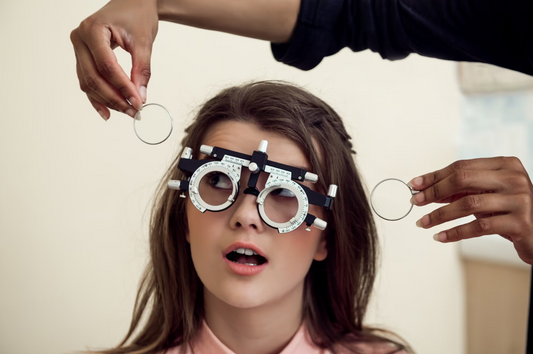As we age, our eyesight gradually deteriorates, and we may need prescription lenses to correct our vision. There are two primary types of prescription lenses available - single vision and progressive prescription lenses. While both types of lenses serve the same purpose, they differ in design and functionality. In this article, we will explore the differences between single vision lenses and progressive prescription lenses to help you make an informed decision when choosing the right lenses for your needs.
What are Single Vision Lenses?
Single vision lenses are the most common type of prescription lenses. They are designed to correct vision at a single distance, either for nearsightedness (myopia) or farsightedness (hyperopia). They have a uniform curvature across the entire lens and are ideal for those who need glasses for a specific purpose, such as reading or driving.
What are Progressive Prescription Lenses?
Progressive prescription lenses, also known as no-line bifocals or multifocal lenses, are designed to provide a gradual transition from distance to near vision correction. They have a varying curvature across the lens, with the top of the lens providing distance correction and the bottom providing near vision correction. This allows for seamless vision correction at all distances, eliminating the need for separate glasses for different tasks.
Design and Functionality Differences
The primary difference between single vision lenses and progressive prescription lenses lies in their design and functionality. Single vision lenses have a uniform curvature across the entire lens, providing clear vision at a single distance. Progressive prescription lenses, on the other hand, have a varying curvature across the lens, providing gradual vision correction at all distances.
Progressive prescription lenses are designed to provide a smooth transition from distance to near vision, allowing for seamless vision correction at all distances. Single vision lenses, on the other hand, provide clear vision at a single distance, making them ideal for specific tasks such as reading or driving.
Advantages and Disadvantages of Single Vision Lenses
Single vision lenses have several advantages. They are easy to manufacture, making them more affordable than progressive prescription lenses. They also provide clear vision at a single distance, making them ideal for specific tasks. However, they do have some disadvantages. They do not provide vision correction at all distances, which can be a problem for those who require glasses for multiple tasks. They can also cause eye strain and headaches when used for extended periods.
Advantages and Disadvantages of Progressive Prescription Lenses
Progressive prescription lenses have several advantages. They provide seamless vision correction at all distances, eliminating the need for multiple glasses for different tasks. They also have a more natural appearance than traditional bifocal lenses, which have a visible line separating the different correction zones. However, they do have some disadvantages. They are more expensive than single vision lenses, and they can take some time to adjust to due to the gradual transition between distance and near vision correction.
Which One is Right for You?
Choosing the right type of lenses depends on your individual needs and preferences. If you need glasses for a specific task such as reading or driving, single vision lenses may be the best option for you. If you require glasses for multiple tasks, progressive prescription lenses may be a better choice. It is important to consult with your optometrist to determine which type of lenses is best suited for your needs.
Conclusion
In conclusion, single vision lenses and progressive prescription lenses both serve the same purpose of correcting vision, but they differ in design and functionality. Single vision lenses provide clear vision at a single distance, making them ideal for specific tasks. Progressive prescription lenses provide seamless vision correction at all distances, eliminating the need for multiple glasses for different tasks. Choosing the right type of lenses depends on your individual needs and preferences, and it is important to consult with your optometrist to determine which type of lenses is best suited for your needs.
FAQs
1. Are progressive prescription lenses more expensive than single vision lenses?
- Progressive prescription lenses tend to be more expensive than single vision lenses.
2. Can I use single vision lenses for multiple tasks?
- While single vision lenses can be used for multiple tasks, they may not provide optimal vision for all distances.
3. Do progressive prescription lenses take longer to adjust to than single vision lenses?
- It can take some time to adjust to progressive prescription lenses, but the length of time can vary depending on the individual.
4. Can I switch from single vision lenses to progressive prescription lenses?
- Yes, it is possible to switch from single vision lenses to progressive prescription lenses if your prescription requires it.
5. Can I switch from progressive prescription lenses to single vision lenses?
- Yes, it is possible to switch from progressive prescription lenses to single vision lenses if your prescription changes or if you prefer a different type of lens.









